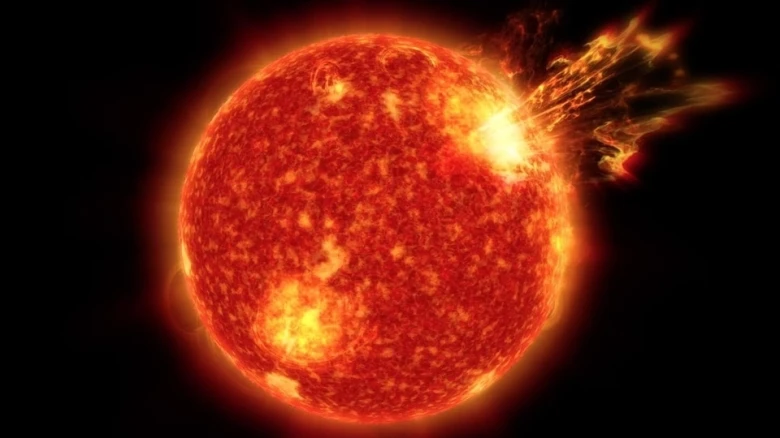North East

A solar storm is heading towards Earth today, July 14. The forecaster of the National Oceanic and Atmospheric Administration (NOAA) has issued a...
Digital Desk: A solar storm is heading towards Earth today, July 14. The forecaster of the National Oceanic and Atmospheric Administration (NOAA) has issued a warning that a G1-class geomagnetic storm will strike our planet sometime later in the day. The solar storm was caused by a coronal mass ejection (CME) cloud emitted by the Sun during a solar flare explosion on July 11. Researchers are continually monitoring the situation since it is feared that solar winds would enhance the conditions and make the solar storm stronger.
What exactly is a solar storm?
According to NASA, solar storms are the culmination of all solar activity that affects the Earth. When strong electromagnetic fields created by solar flares, or CMES, reach our planet, their magnetic fields smash with Earth's magnetic fields, dramatically increasing radiation and heat in the upper atmosphere. Magnetic fields also have an effect on visible light in higher latitudes of the Earth, which can result in auroras.
NOAA's solar storm prediction for today
According to SpaceWeather.com, "NOAA forecasters say minor G1-class geomagnetic storms are possible on July 14th, when a CME is expected to hit Earth's magnetic field. On July 11, SOHO coronagraphs witnessed the uneven halo leaving the sun."
Also Read : India Finance Minister not considering tax waivers for Tesla
The threat of a solar storm
Worryingly, there is a massive sunspot that will face the Earth in a few days. Yesterday, the sunspot AR3372 exploded eight times. July 13, and caused strong solar flare activity that caused radio blackouts all across the world.
Such a powerful solar storm has the potential to damage satellites, impact mobile and internet connectivity, and even shut down the power grid. Although the radiation will not directly affect individuals' health, disruptions to emergency services and power outages in critical locations such as hospitals can be devastating to technology-based infrastructure.
NOAA's GOES-16 satellite's role in a solar storm
GOES-16, earlier known as GOES-R before entering geostationary orbit, is the first of NASA and NOAA's GOES-R series of Geostationary Operational Environmental Satellites. It was launched on November 19, 2016, and started operational on December 18, 2017. GOES-16 is a geostationary satellite in geostationary orbit over the Atlantic Ocean that delivers continuous pictures and atmospheric observations of the Western Hemisphere of the Earth. It also has a lightning mapper that can identify both cloud-to-cloud and cloud-to-ground lightning. GOES-16 is an important tool for weather forecasting, climate monitoring, and space weather prediction.
Leave A Comment